A New Parametric Life Family of Distributions: Properties, Copula and Modeling Failure and Service Times
Abstract
1. Introduction and Genesis
2. Useful Expansions
3. Special Models
4. Statistical Properties
4.1. Quantile Function
4.2. Moments
4.3. Conditional Moments
4.4. Mean Deviation
5. Simple Type Copula
5.1. BvKBX Type via FGM Copula
5.2. BvKBX Type via Modified FGM Copula
5.3. BvKBX Type via Clayton Copula
5.4. BvKBX Type via Renyi’s Entropy
5.5. MvKBX Extention via Clayton Copula
6. Maximum Likelihood Estimation
7. Simulations
8. Applications and Comparing Models
9. Conclusions
Supplementary Materials
Author Contributions
Funding
Acknowledgments
Conflicts of Interest
References
- Marshall, A.W.; Olkin, I. A new method for adding a parameter to a family of distributions with application to the exponential and Weibull families. Biometrika 1997, 84, 641–652. [Google Scholar] [CrossRef]
- Eugene, N.; Lee, C.; Famoye, F. Beta-normal distribution and its applications. Commun. Stat. Theory Methods 2002, 31, 497–512. [Google Scholar] [CrossRef]
- Cordeiro, G.M.; de Castro, M. A new family of generalized distributions. J. Stat. Comput. Simul. 2011, 81, 883–893. [Google Scholar] [CrossRef]
- Yousof, H.M.; Afify, A.Z.; Hamedani, G.G.; Aryal, G. The Burr X generator of distributions for lifetime data. J. Stat. Theory Appl. 2017, 16, 288–305. [Google Scholar] [CrossRef]
- Cordeiro, G.M.; Yousof, H.M.; Ramires, T.G.; Ortega, E.M.M. The Burr XII system of densities: Properties, regression model and applications. J. Stat. Comput. Simul. 2018, 88, 432–456. [Google Scholar] [CrossRef]
- Yousof, H.M.; Majumder, M.; Jahanshahi, S.M.A.; Ali, M.M.; Hamedani, G.G. A new Weibull class of distributions: Theory, characterizations and applications. J. Stat. Res. Iran 2018, 15, 45–83. [Google Scholar] [CrossRef]
- Fisher, N.I. Copulas. In Encyclopedia of Statistical Sciences, Updated Volume 1; Kotz, S., Read, C.B., Banks, D.L., Eds.; John Wiley and Sons: New York, NY, USA, 1997; pp. 159–164. [Google Scholar]
- Farlie, D.J.G. The performance of some correlation coefficients for a general bivariate distribution. Biometrika 1960, 47, 307–323. [Google Scholar] [CrossRef]
- Morgenstern, D. Einfache beispiele zweidimensionaler verteilungen. Mitteilingsblatt Math. Stat. 1965, 8, 234–235. [Google Scholar]
- Gumbel, E.J. Bivariate exponential distributions. J. Am. Stat. Assoc. 1960, 55, 698–707. [Google Scholar] [CrossRef]
- Gumbel, E.J. Bivariate logistic distributions. J. Am. Stat. Assoc. 1961, 56, 335–349. [Google Scholar] [CrossRef]
- Rodriguez-Lallena, J.A.; Ubeda-Flores, M. A new class of bivariate copulas. Stat. Probab. Lett. 2004, 66, 315–325. [Google Scholar] [CrossRef]
- Ghosh, I.; Ray, S. Some alternative bivariate Kumaraswamy type distributions via copula with application in risk management. J. Stat. Theory Pract. 2016, 10, 693–706. [Google Scholar] [CrossRef]
- Pougaza, D.B.; Djafari, M.A. Maximum Entropies Copulas. In Proceedings of the 30th International Workshop on Bayesian Inference and Maximum Entropy Methods in Science and Engineering, Chamonix, France, 4–9 July 2010; AIP Press: College Park, MD, USA, 2011; pp. 329–336. [Google Scholar]
- Murthy, D.N.P.; Xie, M.; Jiang, R. Weibull Models; Wiley: Hoboken, NJ, USA, 2004. [Google Scholar]
- Aryal, G.R.; Ortega, E.M.; Hamedani, G.G.; Yousof, H.M. The Topp Leone Generated Weibull distribution: Regression model, characterizations and applications. Int. J. Stat. Probab. 2017, 6, 126–141. [Google Scholar] [CrossRef]
- Yousof, H.M.; Altun, E.; Ramires, T.G.; Alizadeh, M.; Rasekhi, M. A new family of distributions with properties, regression models and applications. J. Stat. Manag. Syst. 2018, 21, 163–188. [Google Scholar] [CrossRef]
- Elbiely, M.M.; Yousof, H.M. A New Extension of the Lomax Distribution and its Applications. J. Stat. Appl. 2018, 2, 18–34. [Google Scholar]
- Altun, E.; Yousof, H.M.; Chakraborty, S.; Handique, L. Zografos-Balakrishnan Burr XII distribution: Regression modeling and applications. Int. J. Math. Stat. 2018, 19, 46–70. [Google Scholar]
- Ibrahim, M.; Yousof, H.M. A new generalized Lomax model: Statistical properties and applications. J. Data Sci. 2020, 18, 190–217. [Google Scholar]
- Ibrahim, M. A new extended Fréchet distribution: Properties and estimation. Pak. J. Stat. Oper. Res. 2019, 15, 773–796. [Google Scholar]
- Ibrahim, M. The compound Poisson Rayleigh Burr XII distribution: Properties and applications. J. Appl. Probab. Stat. 2020, 15, 73–97. [Google Scholar]
- Ibrahim, M. The generalized odd Log-logistic Nadarajah Haghighi distribution: Statistical properties and different methods of estimation. J. Appl. Probab. Stat. 2020, 15, 61–84. [Google Scholar]
- Yadav, A.S.; Goual, H.; Alotaibi, R.M.; Rezk, H.; Ali, M.M.; Yousof, H.M. Validation of the Topp-Leone-Lomax model via a modified Nikulin-Rao-Robson GOF test with different methods of estimation. Symmetry 2020, 12, 57. [Google Scholar] [CrossRef]
- Mansour, M.; Yousof, H.M.; Shehata, W.A.M.; Ibrahim, M. A new two parameter Burr XII distribution: Properties, copula, different estimation methods and modeling acute bone cancer data. J. Nonlinear Sci. Appl. 2020, 13, 223–238. [Google Scholar] [CrossRef]
- Goual, H.; Yousof, H.M. Validation of Burr XII inverse Rayleigh model via a modified chi squared GOF test. J. Appl. Stat. 2019, 47, 1–32. [Google Scholar]
- Goual, H.; Yousof, H.M.; Ali, M.M. Lomax inverse Weibull model: Properties, applications and a modified Chi-squared GOF test for validation. J. Nonlinear Sci. Appl. 2020, 13, 330–353. [Google Scholar] [CrossRef]
- Aarset, M.V. How to identify a bathtub hazard rate. IEEE Trans. Reliab. 1987, 36, 106–108. [Google Scholar] [CrossRef]
- Khalil, M.G.; Hamedani, G.G.; Yousof, H.M. The Burr X exponentiated Weibull model: Characterizations, mathematical properties and applications to failure and survival times data. Pak. J. Stat. Oper. Res. 2019, XV, 141–160. [Google Scholar] [CrossRef]
- Altun, E.; Yousof, H.M.; Hamedani, G.G. A new log-location regression model with influence diagnostics and residual analysis. Facta Univ. Ser. Math. Inform. 2018, 33, 417–449. [Google Scholar]
- Yousof, H.M.; Alizadeh, M.; Jahanshahiand, S.M.A.; Ramires, T.G.; Ghosh, I.; Hamedani, G.G. The transmuted Topp-Leone G family of distributions: Theory, characterizations and applications. J. Data Sci. 2017, 15, 723–740. [Google Scholar]
- Cordeiro, G.M.; Ortega, E.M.; Popovic, B.V. The gamma-Lomax distribution. J. Stat. Comput. Simul. 2015, 85, 305–319. [Google Scholar] [CrossRef]
- Lemonte, A.J.; Cordeiro, G.M. An extended Lomax distribution. Statistics 2013, 47, 800–816. [Google Scholar] [CrossRef]
- Gupta, R.C.; Gupta, P.L.; Gupta, R.D. Modeling failure time data by Lehman alternatives. Commun. Stat. Theory Methods 1998, 27, 887–904. [Google Scholar] [CrossRef]
- Lomax, K.S. Business failures: Another example of the analysis of failure data. J. Am. Stat. Assoc. 1954, 49, 847–852. [Google Scholar] [CrossRef]
- Pešta, M.; Okhrin, O. Conditional least squares and copulae in claims reserving for a single line of business. Insur. Math. Econ. 2014, 56, 28–37. [Google Scholar] [CrossRef]
- Peštová, B.; Pešta, M. Change point estimation in panel data without boundary issue. Risks 2017, 5, 7. [Google Scholar] [CrossRef]
- Hamedani, G.G.; Yousof, H.M.; Rasekhi, M.; Alizadeh, M.; Najibi, S.M. Type I general exponential class of distributions. Pak. J. Stat. Oper. Res. 2017, 14, 39–55. [Google Scholar] [CrossRef][Green Version]
- Mansour, M.; Korkmaz, M.Ç.; Ali, M.M.; Yousof, H.M.; Ansari, S.I.; Ibrahim, M. A generalization of the exponentiated Weibull model with properties, Copula and application. Eurasian Bull. Math. 2020, 3, 84–102. [Google Scholar]
- Korkmaz, M.C.; Yousof, H.M.; Hamedani, G.G.; Ali, M.M. The Marshall-Olkin generalized G Poisson family of distributions. Pak. J. Stat. 2018, 34, 251–267. [Google Scholar]
- Hamedani, G.G.; Altun, E.; Korkmaz, M.C.; Yousof, H.M.; Butt, N.S. A new extended G family of continuous distributions with mathematical properties, characterizations and regression modeling. Pak. J. Stat. Oper. Res. 2018, 14, 737–758. [Google Scholar] [CrossRef]
- Hamedani, G.G.; Rasekhi, M.; Najibi, S.M.; Yousof, H.M.; Alizadeh, M. Type II general exponential class of distributions. Pak. J. Stat. Oper. Res. 2019, 15, 503–523. [Google Scholar] [CrossRef]
- Korkmaz, M.C.; Altun, E.; Yousof, H.M.; Hamedani, G.G. The odd power Lindley generator of probability distributions: Properties, characterizations and regression modeling. Int. J. Stat. Probab. 2019, 8, 70–89. [Google Scholar]
- Nascimento, A.D.C.; Silva, K.F.; Cordeiro, G.M.; Alizadeh, M.; Yousof, H.M. The odd Nadarajah-Haghighi family of distributions: Properties and applications. Stud. Sci. Math. Hung. 2019, 56, 1–26. [Google Scholar] [CrossRef]
- Elsayed, H.A.H.; Yousof, H.M. The generalized odd generalized exponential Fréchet model: univariate, bivariate and multivariate extensions with properties and applications to the univariate version. Pak. J. Stat. Oper. Res. 2020, 16, 529–544. [Google Scholar] [CrossRef]
- Ibrahim, M.; Yousof, H.M. Transmuted Topp-Leone Weibull Lifetime Distribution: Statistical Properties and Different Method of Estimation. Pak. J. Stat. Oper. Res. 2020, 16, 501–515. [Google Scholar] [CrossRef]
- Ibrahim, M.; Mohammed, W.S.; Yousof, H.M. Bayesian and Classical Estimation for the One Parameter Double Lindley Model. Pak. J. Stat. Oper. Res. 2020, 16, 409–420. [Google Scholar]



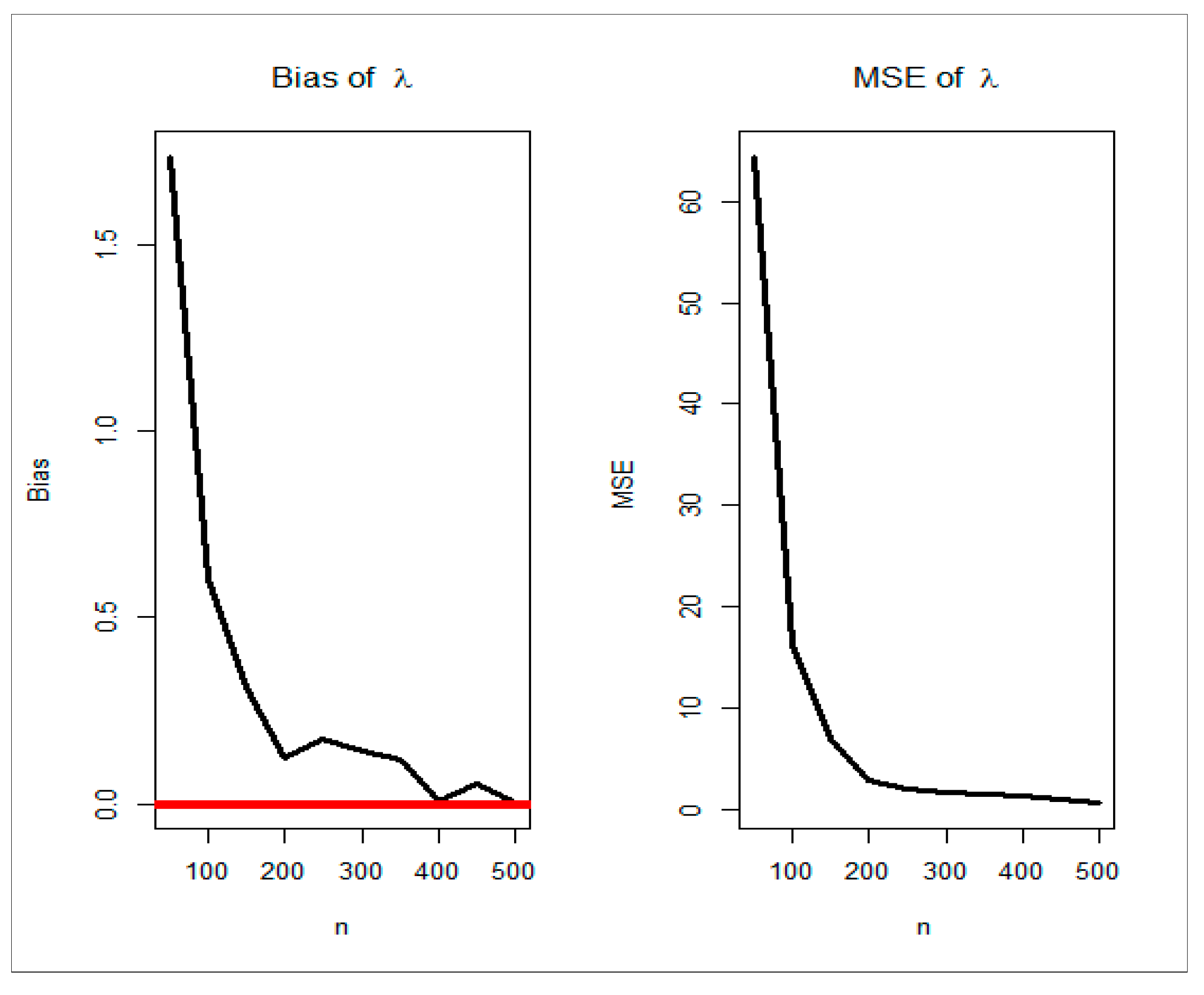
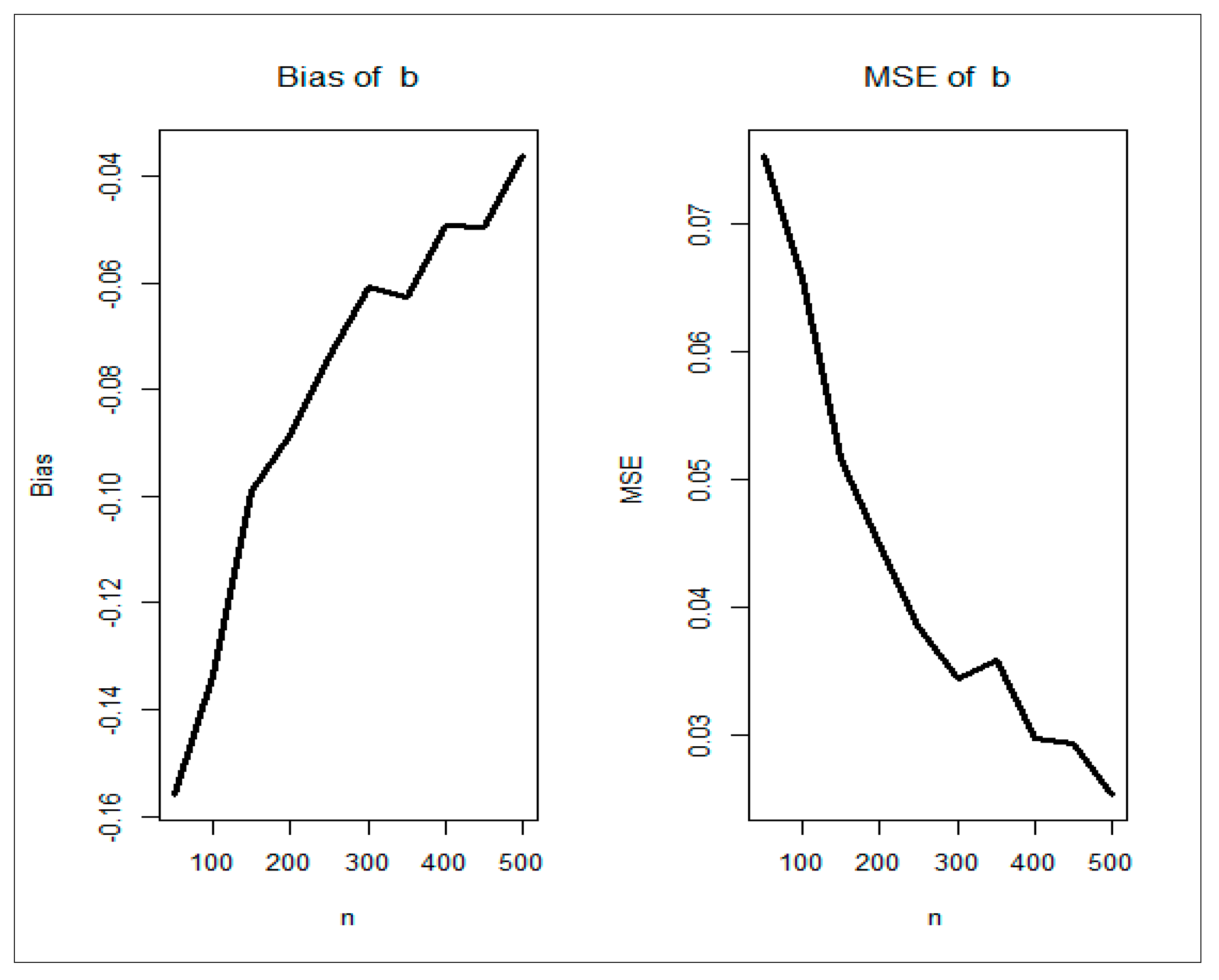

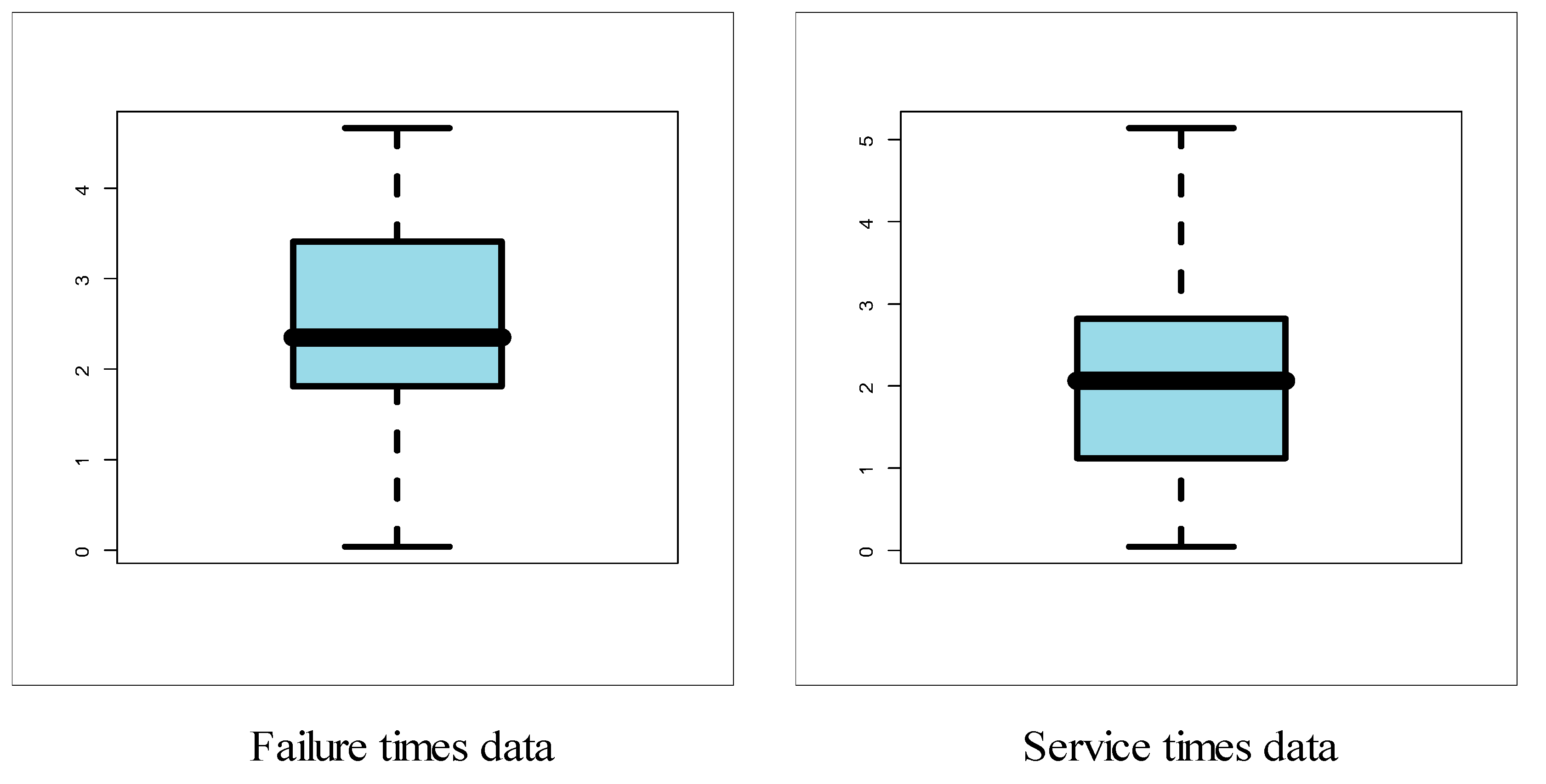
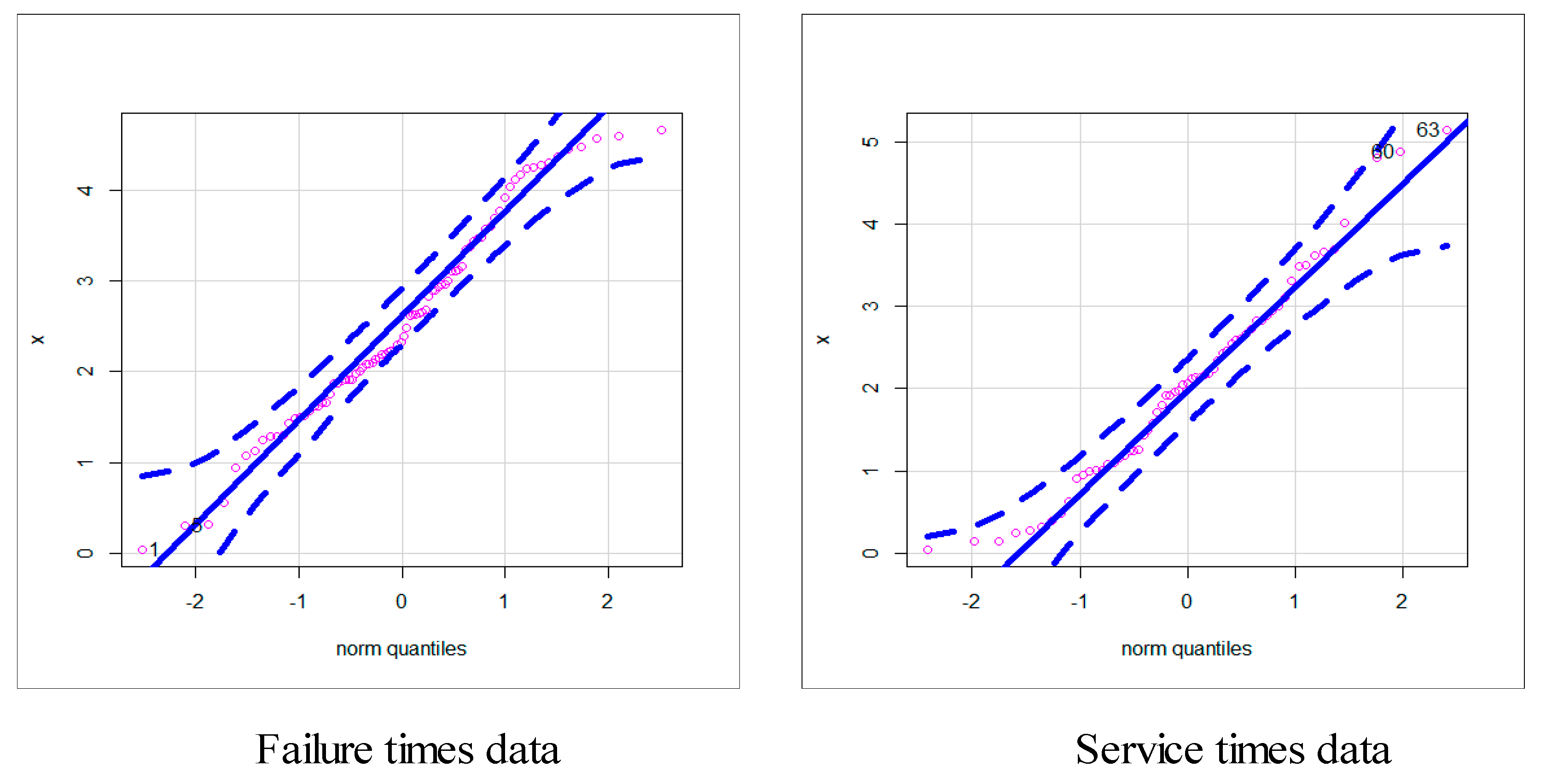
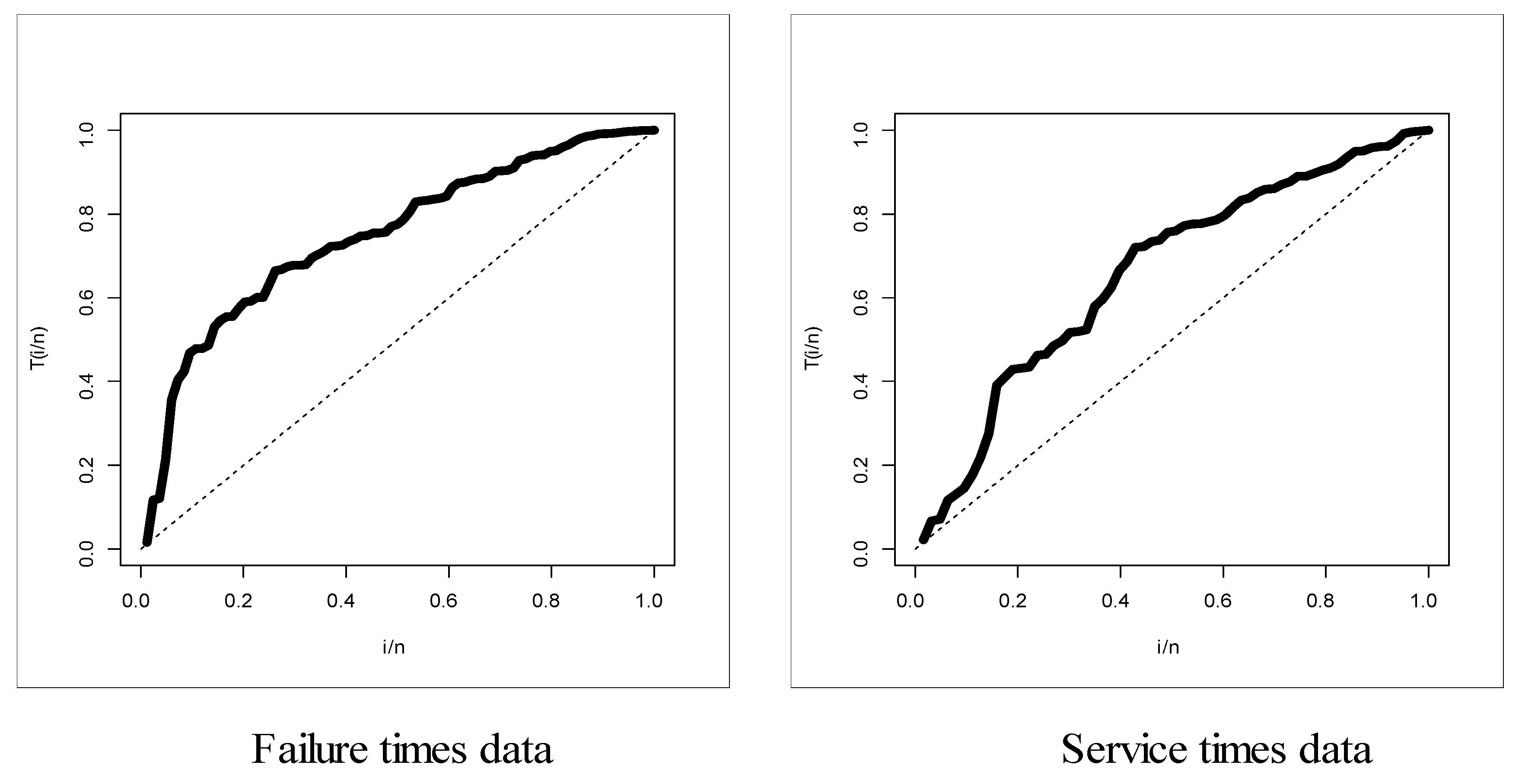

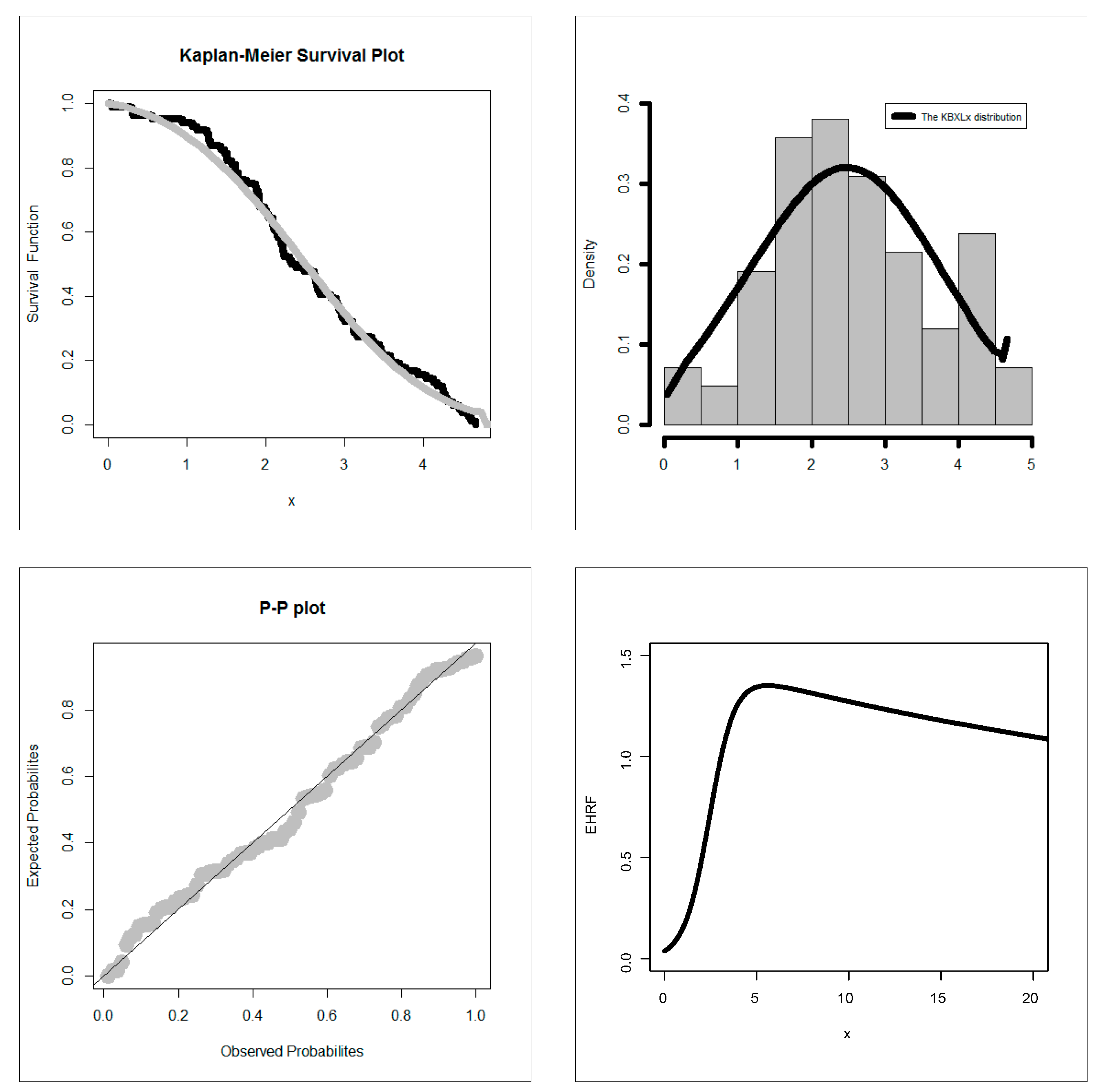
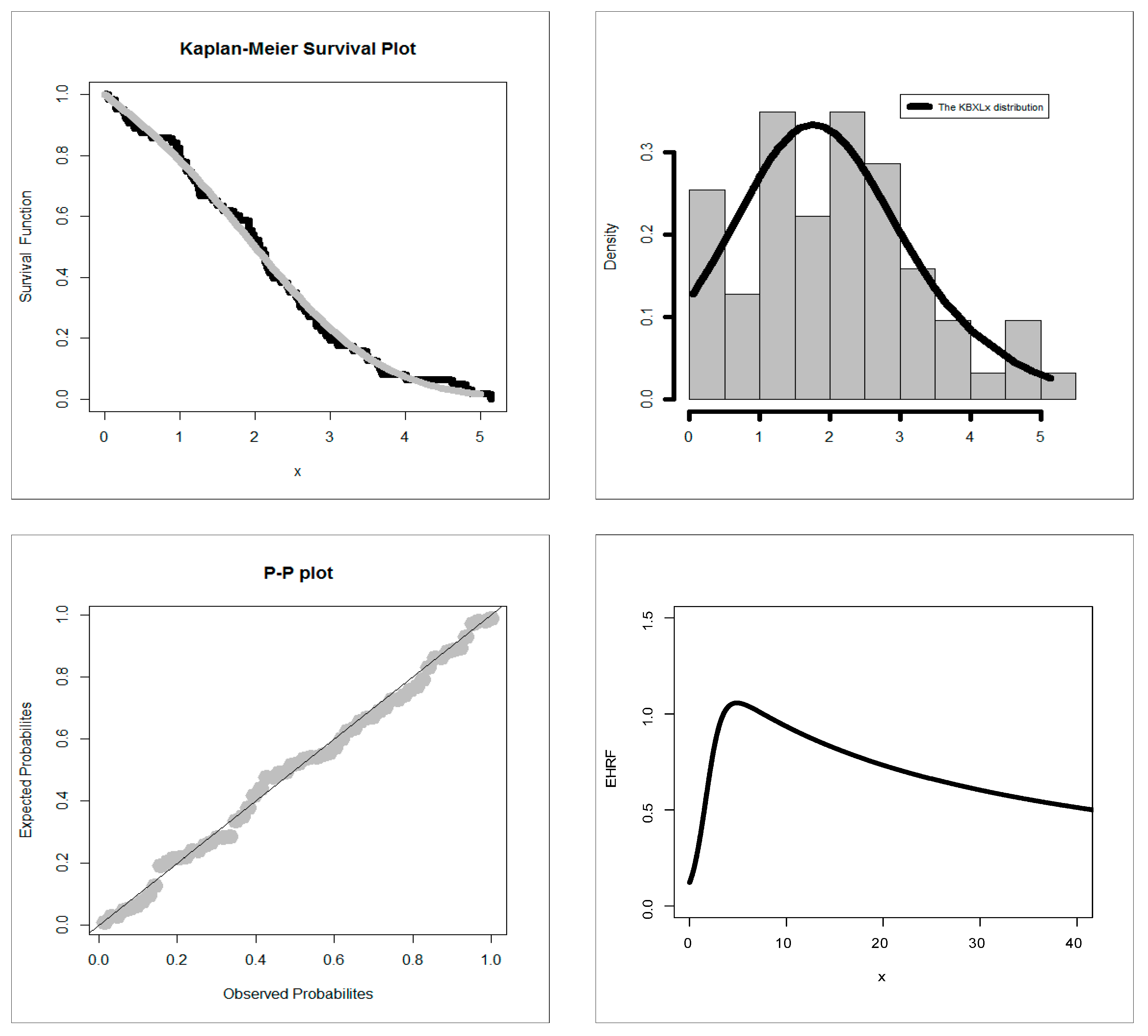
| No. | ||||
|---|---|---|---|---|
| 1 | ||||
| 2 | ||||
| 3 | ||||
| 4 | ||||
| 5 |
| No. | Model | Abbreviation | Author |
|---|---|---|---|
| 1 | Special generalized mixture Lomax | SGMLx | [29] |
| 2 | Odd log-logistic Lx | OLLLx | [30] |
| 3 | Reduced OLLLx | ROLLLx | [30] |
| 4 | Reduced Burr–Hatke Lx | RBHLx | [6] |
| 5 | Transmuted Topp–Leone Lx | TTLLx | [31] |
| 6 | Reduced TTLLx | RTTLLx | [31] |
| 7 | Gamma Lx | GamLx | [32] |
| 8 | Kumaraswamy Lx | KumLx | [33] |
| 9 | McDonald Lx | McLx | [33] |
| 10 | Beta Lx | BLx | [33] |
| 11 | Exponentiated Lx | ExpLx | [34] |
| 12 | Lomax | Lx | [35] |
| 13 | Proportional reversed hazard rate Lx | PRHRLx | New |
| Model | Estimates | ||||
|---|---|---|---|---|---|
| KBXLx(θ,α,λ,b,a) | 0.08869 | 0.141769 | 4.47434 | 1.6099 | 1.98809 |
| (0.0097) | (0.00216) | (171.22) | (0.0024) | (0.0021) | |
| McLx(θ,α,λ,b,a) | 2.1875 | 119.1751 | 12.4171 | 19.9243 | 75.6606 |
| (0.5211) | (140.297) | (20.845) | (38.960) | (147.24) | |
| KLx(θ,β,b,a) | 2.6150 | 100.2756 | 5.27710 | 78.6774 | |
| (0.3822) | (120.486) | (9.8116) | (186.01) | ||
| TTLLx(θ,β,b,a) | −0.8075 | 2.47663 | (15,608) | (38,628) | |
| (0.1396) | (0.5418) | (1602.4) | (123.94) | ||
| BLx(θ,β,b,a) | 3.60360 | 33.63870 | 4.83070 | 118.837 | |
| (0.6187) | (63.715) | (9.2382) | (428.93) | ||
| PRHRLx(β,b,a) | 3.73 × 10⁶ | 4.707 × 10⁻1 | 4.49 × 10⁶ | ||
| 1.01 × 10⁶ | (0.00001) | 37.14684 | |||
| SGMLx(θ,b,a) | −1.04 × 10⁻1 | 9.83 × 10⁶ | 1.18 × e⁷ | ||
| (0.1223) | (4843.3) | (501.04) | |||
| RTTLLx(θ,β,a) | −0.84732 | 5.52057 | 1.15678 | ||
| (0.1001) | (1.1848) | (0.09588) | |||
| OLLLx(θ,b,a) | 2.32636 | (7.17 × e⁵) | 2.34 × 10⁶) | ||
| (2.14 × 10⁻1) | (1.19 × e⁴) | (2.61 × e1) | |||
| ExpLx(v,b,a) | 3.62610 | 20,074.5 | 26,257.7 | ||
| (0.6236) | (2041.8) | (99.74) | |||
| GamLx(θ,b,a) | 3.58760 | 52,001.4 | 37,029.7 | ||
| (0.5133) | (7955) | (81.16) | |||
| ROLLLx(θ,a) | 3.890564 | 0.57316 | |||
| (0.36524) | (0.01946) | ||||
| RBHLx(b,a) | 10,801,754 | 51,367,189 | |||
| (983,309) | (232,312) | ||||
| Lx(b,a) | 51,425.4 | 131,790 | |||
| (5933.5) | (296.12) | ||||
| Model | -ℓ | AIC | CAIC | BIC | HQIC | ||
|---|---|---|---|---|---|---|---|
| KBXLx | 127.099 | 264.197 | 264.966 | 276.351 | 269.083 | 0.512 | 0.065 |
| McLx | 129.802 | 269.605 | 270.364 | 281.818 | 274.517 | 0.667 | 0.086 |
| OLLLx | 134.424 | 274.847 | 275.147 | 282.139 | 277.779 | 0.941 | 0.101 |
| TTLLx | 135.570 | 279.140 | 279.646 | 288.863 | 283.049 | 1.126 | 0.127 |
| GamLx | 138.404 | 282.808 | 283.105 | 290.136 | 285.756 | 1.367 | 0.162 |
| BLx | 138.718 | 285.435 | 285.935 | 295.206 | 289.365 | 1.408 | 0.168 |
| ExpLx | 141.400 | 288.799 | 289.096 | 296.127 | 291.747 | 1.744 | 0.219 |
| ROLLLx | 142.845 | 289.690 | 289.839 | 294.552 | 291.645 | 1.957 | 0.255 |
| SGMLx | 143.087 | 292.175 | 292.475 | 299.467 | 295.106 | 1.347 | 0.158 |
| RTTLLx | 153.981 | 313.962 | 314.262 | 321.254 | 316.893 | 3.753 | 0.559 |
| PRHRLx | 162.877 | 331.754 | 332.054 | 339.046 | 334.686 | 1.367 | 0.161 |
| Lx | 164.988 | 333.977 | 334.123 | 338.862 | 335.942 | 1.398 | 0.167 |
| RBHLx | 168.604 | 341.208 | 341.356 | 346.070 | 343.162 | 1.671 | 0.207 |
| Model | Estimates | ||||
|---|---|---|---|---|---|
| KBXLx(θ,α,λ,b,a) | 0.1831 | 1.6937 | 0.25705 | 1.1995 | 1.52995 |
| (3.5 × 102) | (2.4124) | (0.3912) | (2.1 × 102) | (2.2 × 102) | |
| BLx(θ,β,b,a) | 1.9218 | 31.2594 | 4.9684 | 169.572 | |
| (0.3184) | (316.84) | (50.528) | (339.21) | ||
| KLx(θ,β,b,a) | 1.6691 | 60.5673 | 2.56490 | 65.0640 | |
| (0.257) | (86.013) | (4.7589) | (177.59) | ||
| TTLLx(θ,β,b,a) | (−0.607) | 1.78578 | 2123.391 | 4822.79 | |
| (0.2137) | (0.4152) | (163.915) | (200.01) | ||
| RTTLLx(θ,β,a) | −0.6715 | 2.74496 | 1.01238 | ||
| (0.18746) | (0.6696) | (0.1141) | |||
| PRHRLx(β,b,a) | 1.59 × 10⁶ | 3.93 × 10⁻1 | 1.30 × 10⁶ | ||
| 2.01 × 103 | 0.0004 × 10⁻1 | 0.95 × 10⁶ | |||
| SGMLx(θ,b,a) | −1.04 × 10⁻1 | 6.45 × 10⁶ | 6.33 × 10⁶ | ||
| (4.1 × 10⁻1⁰) | (3.21 × 10⁶) | (3.8573) | |||
| GamLx(θ,b,a) | 1.9073 | 35,842.433 | 39,197.57 | ||
| (0.3213) | (6945.074) | (151.653) | |||
| OLLLx(θ,b,a) | 1.66419 | 6.340 × 10⁵ | 2.01 × 10⁶ | ||
| (1.79 × 10⁻1) | (1.68 × 10⁴) | 7.22 × 10⁶ | |||
| ExpLx(θ,b,a) | 1.9145 | 22,971.15 | 32,882 | ||
| (0.348) | (3209.53) | (162.2) | |||
| RBHLx(b,a) | 14,055,522 | 53,203,423 | |||
| (422.01) | (28.5232) | ||||
| ROLLLx(θ,a) | 2.37233 | 0.69109 | |||
| (0.2683) | (0.0449) | ||||
| Lx(b,a) | 99,269.8 | 207,019.4 | |||
| (11,864) | (301.237) | ||||
| Model | -ℓ | AIC | CAIC | BIC | HQIC | ||
|---|---|---|---|---|---|---|---|
| KBXLx | 98.0851 | 206.170 | 207.223 | 216.886 | 210.385 | 0.219 | 0.032 |
| KLx | 100.866 | 209.735 | 210.425 | 218.308 | 213.107 | 0.739 | 0.122 |
| TTLLx | 102.449 | 212.900 | 213.589 | 221.472 | 216.271 | 0.943 | 0.155 |
| GamLx | 102.833 | 211.666 | 212.073 | 218.096 | 214.195 | 1.112 | 0.184 |
| SGMLx | 102.894 | 211.788 | 212.195 | 218.218 | 214.317 | 1.113 | 0.184 |
| BLx | 102.961 | 213.922 | 214.612 | 222.495 | 217.294 | 1.134 | 0.187 |
| ExpLx | 103.550 | 213.099 | 213.506 | 219.529 | 215.628 | 1.233 | 0.204 |
| OLLLx | 104.904 | 215.808 | 216.215 | 222.238 | 218.337 | 0.942 | 0.155 |
| PRHRLx | 109.299 | 224.597 | 225.004 | 231.027 | 227.126 | 1.126 | 0.186 |
| Lx | 109.299 | 222.598 | 222.798 | 226.884 | 224.283 | 1.127 | 0.186 |
| ROLLLx | 110.729 | 225.457 | 225.657 | 229.744 | 227.143 | 2.347 | 0.391 |
| RTTLLx | 112.186 | 230.371 | 230.778 | 236.800 | 232.900 | 2.688 | 0.453 |
| RBHLx | 112.601 | 229.201 | 229.401 | 233.487 | 230.887 | 1.398 | 0.232 |
© 2020 by the authors. Licensee MDPI, Basel, Switzerland. This article is an open access article distributed under the terms and conditions of the Creative Commons Attribution (CC BY) license (http://creativecommons.org/licenses/by/4.0/).
Share and Cite
Shrahili, M.; Alotaibi, N. A New Parametric Life Family of Distributions: Properties, Copula and Modeling Failure and Service Times. Symmetry 2020, 12, 1462. https://doi.org/10.3390/sym12091462
Shrahili M, Alotaibi N. A New Parametric Life Family of Distributions: Properties, Copula and Modeling Failure and Service Times. Symmetry. 2020; 12(9):1462. https://doi.org/10.3390/sym12091462
Chicago/Turabian StyleShrahili, Mansour, and Naif Alotaibi. 2020. "A New Parametric Life Family of Distributions: Properties, Copula and Modeling Failure and Service Times" Symmetry 12, no. 9: 1462. https://doi.org/10.3390/sym12091462
APA StyleShrahili, M., & Alotaibi, N. (2020). A New Parametric Life Family of Distributions: Properties, Copula and Modeling Failure and Service Times. Symmetry, 12(9), 1462. https://doi.org/10.3390/sym12091462





